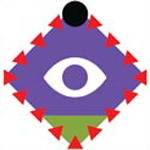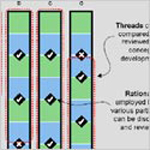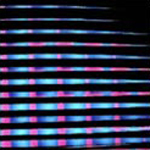KEYWORDS
AHLTA, data visualization, electronic medical records, graphic user interface navigation, HCSI, health care service event, healthcare, heuristics, information architecture, information visualization, intelligent iconography, VISTA, workflow
ABSTRACT
An analysis of paper medical records systems reveals a neglected metric for improved Workflow and Navigation in the design of Electronic Medical Records (EMR) Graphical User Interface (GUI) systems. This metric, the healthcare service event, failed to make a meaningful transition into the contemporary EMR GUI workflow. Current electronic systems typically follow a primarily task-based structure: dividing content into case-by-case selected activity modules, i.e.,Vital Signs, Medications, Labs, etcetera. In contrast, paper medical records systems, like real-world professional practices, follow a primarily event-based structure: grouping content according to healthcare service events, i.e., a physician encounter, a diagnostic procedure, a surgery, etcetera. Designers of contemporary EMR systems would benefit from a unified taxonomy that seamlessly integrates and structurally supports both event-based and task-based logics. Our proposal for achieving such a system requires a bridging device which we refer to as intelligent iconography. This will result in the effective integration of content representation and its control through a unified taxonomy for a superior EMR GUI workflow
Intelligent icons, specifically designed for an integrated EMR GUI, require a proprietary taxonomy, ontology, and manifest. Taxonomy refers to the categorical and principle divisions to be represented through intelligent iconography; ontology determines how each taxonomic element is defined; manifest provides for the explicit visualization of the intelligent icons. Through these considerations, this paper presents a fully articulated set of intelligent icons herein referred to as: Health Care Service Iconography (HCSI).
BIOGRAPHY
William M. Bevington currently serves as Associate Professor of Information Mapping in the School of Art, Media, and Technology at Parsons The New School for Design, The New School, New York. He formerly served as the Executive Director for Parsons Institute of Information Mapping, Chairman of the Communication Design department at Parsons School of Design, and various professorial and instructional roles at his Alma Mater, The Cooper Union for the Advancement of Science and Art. He is an information designer and information theorist specializing in creating tools for the rapid assessment of complex data. His first significant project was the Blackout Procedures Manual for Con Edison in 1983, and the last was a major Geospatial Media Mash-up Tool under U.S. government contract entitled the Geospace and Media Tool (GMT). Mr. Bevington has developed toolsets for transit systems applications, stock trading applications, and health management tools as a principle designer at Spire Integrated Design, New York. He has lectured worldwide, illustrated Graphic Designers Production Handbook, co-authored Working with Graphic Designers and Designing with Type with Jim Craig. He is also the author of Typography: The Principles, A Basic Guide to Using Type published by The Cooper Union.
David Fusilier currently serves as an information designer at Parsons Institute of Information Mapping and as a graphic and typographic designer at the Brooklyn-based Darden Studio. He is a recent graduate of Parsons The New School for Design, The New School, earning his BFA from the Communication Design and Technology Department. Formerly, he pursued a premedical curriculum at Louisiana State University, complimented by jobs working as both a medical records clerk at the Baton Rouge Clinic and volunteer in the endoscopy department of Our Lady of the Lake Hospital.





